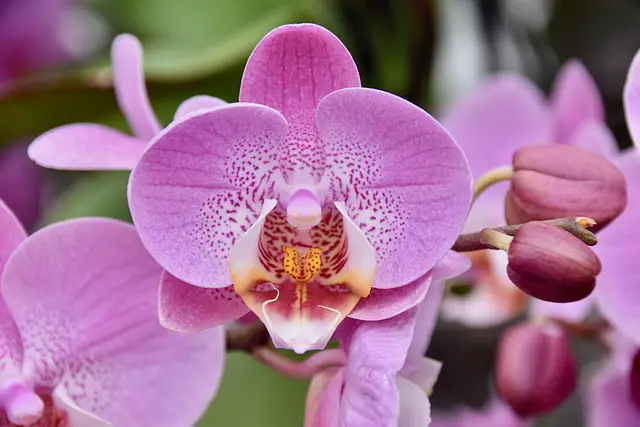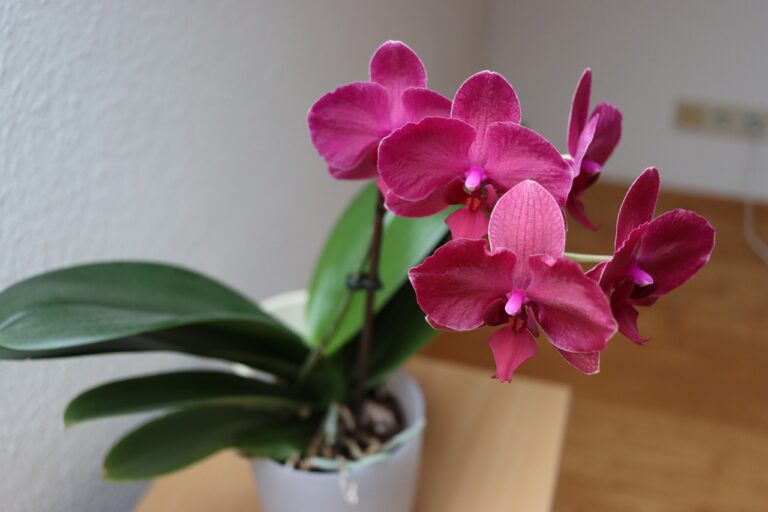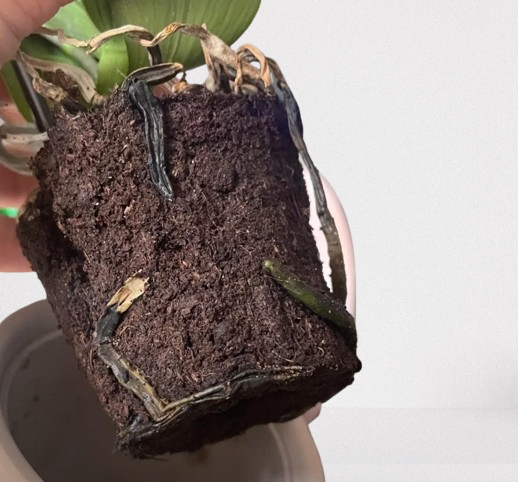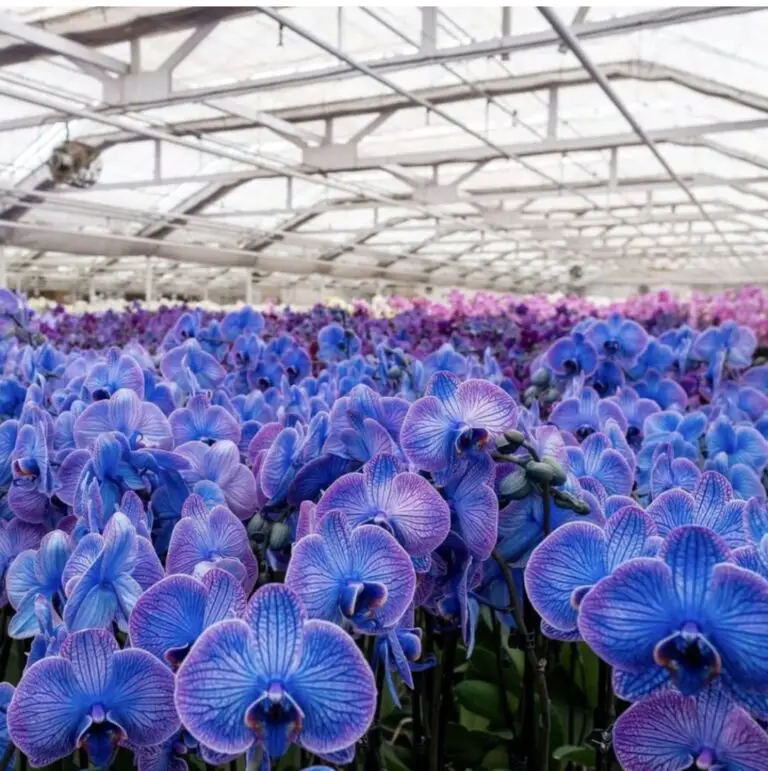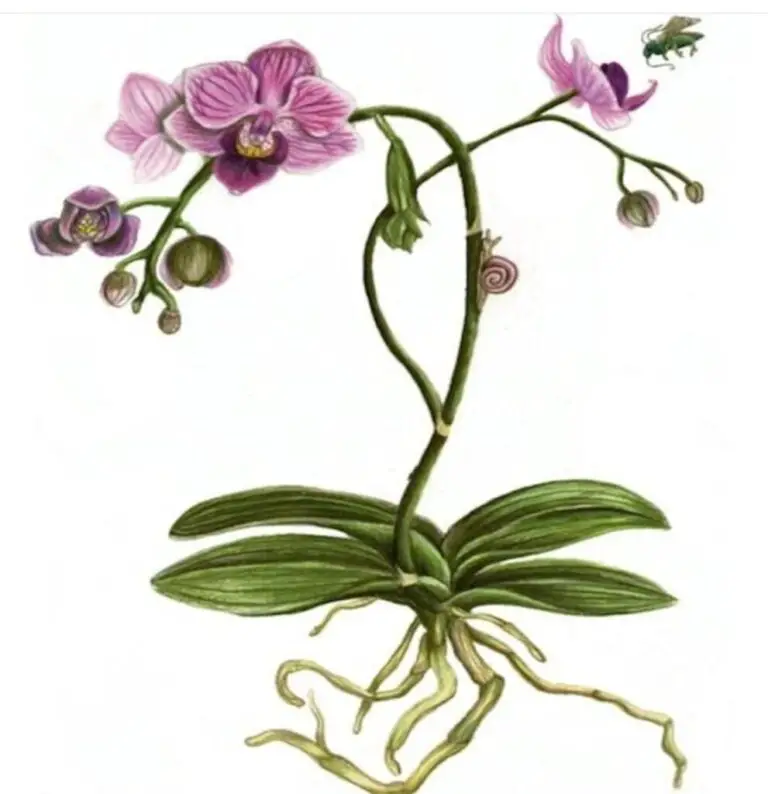The Forget Me Not Flower is a timeless symbol of love, remembrance, and enduring beauty. With its delicate blue petals and a name that evokes deep emotion, this charming bloom has become a favorite in gardens, wildflower meadows, and even bouquets. Whether you’re a seasoned gardener or just starting your plant collection, the forget me not is a versatile and low-maintenance flower that can thrive with the right care.It is a useful addition to any landscape because it can thrive in a variety of settings, from full sun to shady spots.
However, to truly make the most of this lovely plant, it’s essential to provide it with the proper attention. Despite its hardy nature, forget me nots do require specific conditions to thrive, from soil preferences to watering routines. In this comprehensive guide, we will walk you through the 20 most important tips for growing and maintaining forget me not flowers. From selecting the perfect planting spot to troubleshooting common issues like poor blooming or pest infestations, we’ve covered everything you need to know. By following these expert tips, you’ll be able to grow vibrant, healthy forget me nots that will bloom beautifully year after year.

1. What Are Forget Me Nots?
Forget me nots belong to the Myosotis genus, with Myosotis sylvatica being the most popular. These small, five-petaled blooms often come in shades of blue, pink, or white. They are known for self-seeding and spreading easily, making them an ideal choice for natural-looking gardens and cottage-style landscapes.
2. Ideal Growing Zones
Forget me not flowers thrive in USDA hardiness zones 3 to 8. They prefer cooler climates and can handle light frost, especially perennial varieties. Knowing your growing zone helps you choose the right species and gives your flowers the best chance to flourish throughout the seasons.
3. Annual vs. Perennial Varieties
There are two types of forget-me-nots: annual and perennial.Annuals bloom for one season and reseed easily, while perennials return year after year with proper care. Understanding the difference helps gardeners plan for continuous blooms and long-term landscaping goals based on climate and maintenance preferences.
4. Choosing the Right Spot
These flowers love partial shade but can tolerate full sun in cooler regions. To avoid drying out, pick a spot that receives early sunlight and afternoon shade.Areas near trees, borders, or shaded pathways are perfect. Proper placement ensures healthier plants and extended blooming through spring and early summer.
5 Soil Requirements
Forget me nots prefer moist, well-drained soil that’s rich in organic matter.The ideal pH range is 6.0 to 7.0, which is slightly acidic to neutral. Before planting, you can add aged manure or compost to the soil to nourish it.Avoid compacted or sandy soils that dry quickly, as these can stress the shallow root system.
6. When to Plant
The best time to plant forget me nots is in early spring after the last frost or in late summer for blooms the following year. Seeds can settle and establish before winter if they are planted in the fall.Timing your planting properly gives the roots a head start and ensures better flowering.
7. How to Plant Seeds or Seedlings
Eight to ten weeks prior to transplanting, sow seeds straight into the ground or start them indoors. Seeds should be kept moist and lightly covered with soil. Seedlings should be spaced roughly 6 inches apart to prevent crowding. When young forget me nots are planted properly, they have more space to grow and the chance of illness is decreased.
8. How Often to Water
To maintain uniform moisture in the soil, especially during dry spells, water it frequently. Keep in mind that excessive watering can cause root rot. Try to get around 1 inch of water per week from irrigation or rainfall. Strong growth and the avoidance of wilting or leaf drop are supported by regular hydration.
9. Fertilizer Tips
Forget me nots don’t need heavy feeding. A light application of balanced, slow-release fertilizer in early spring boosts blooming. Overfertilization may result in fewer blooms and excessive leaf development. Compost or organic feed once a month during the growing season is often enough to keep your plants happy.
10. Mulching for Moisture Retention
Apply a thin layer of mulch around your forget me nots to help retain soil moisture and keep roots cool.The ideal mulches are organic ones, such as straw, bark, or shreds of leaves.Mulching also suppresses weeds and reduces evaporation, creating a stable growing environment that supports healthier, longer-lasting blooms.
11. Pruning and Deadheading
Prune faded or dead flowers regularly to encourage continuous blooming and prevent unwanted self-seeding. Use clean scissors to snip off deadheads just above new buds. Pruning also helps the plant conserve energy, directs growth, and keeps the garden looking tidy without harming the plant’s natural spreading habit.
12. Managing Spread
Forget me nots are prolific self-seeders and can quickly overrun garden beds. To control their spread, deadhead before seeds form or remove unwanted seedlings in early spring. Consider growing them in containers or bordered areas. Managing their growth helps you enjoy their charm without letting them become invasive.
13. Supporting Healthy Blooms
To support lush blooming, combine consistent watering, light feeding, and proper sun exposure. Remove any yellowing leaves and make sure plants aren’t overcrowded. Healthy foliage equals more flowers. Regular care ensures each forget me not plant has the strength to produce vibrant, long-lasting blooms throughout the growing season.
14. Pest Control
Common pests like aphids, slugs, and spider mites can affect forget me nots. To control infestations, use natural predators like ladybirds, insecticidal soap, or neem oil. Check leaves regularly for damage or sticky residue. Early detection and treatment help maintain plant health and prevent pest outbreaks from spreading.
15 Propagating by Division
You can also propagate forget-me-nots by dividing the plant. This method works well in early spring when the plant is just starting to emerge. Dig up the clumps and gently separate the root ball into smaller sections. Replant the divisions in other parts of your garden or share them with friends and family.
16. Wilting or Yellowing Leaves
Wilting or yellowing leaves can indicate several issues, such as underwatering, overwatering, or nutrient deficiencies. Ensure consistent moisture, but not soggy soil. If the plant is suffering from poor soil quality or nutrient imbalance, consider adding organic compost or a balanced fertilizer to improve overall plant health and vitality.
17. Poor Blooming
If your forget me nots are not blooming well, they may need more sunlight or proper feeding. Make sure they get four hours or more of indirect sunshine each day.Lack of blooms can also result from overcrowding, so thin plants to allow space for proper air circulation and more productive flowering.
18. Winter Care
During the colder months, forget me nots may go dormant, especially perennial varieties. To protect them, apply a layer of mulch to insulate the roots. In particularly cold climates, you can cover them with frost cloths or move potted plants indoors. Winter care ensures they return strong in spring.
19. Encouraging Self-Seeding or Replanting
To encourage self-seeding, allow some flowers to fade and produce seeds. You can scatter the seeds in your garden for new growth next season. For better control, collect seeds in late summer and replant them in a more controlled area. This method keeps your garden full of vibrant forget me nots year after year.
20. Container vs. Garden Growing
Though plants grown in containers can need more frequent watering, forget-me-nots grow well both in the ground and in pots.When planting in containers, choose large pots with good drainage. In garden beds, forget me nots benefit from more space to spread. Container growing is perfect for smaller spaces or patios.
With these 20 essential tips, your forget me nots will flourish beautifully, bringing charm and vibrant color to your garden. Whether you’re a seasoned gardener or a beginner, these straightforward care steps will help you grow healthy, long-lasting plants. Happy gardening, and don’t forget to share your results!
FAQS
What is a Forget Me Not Flower?
The Forget Me Not Flower is a small, delicate bloom known for its vivid blue petals and symbolic meaning of remembrance. It belongs to the Myosotis genus and can be found in various colors, including blue, pink, and white. This flower thrives in cool climates and is often used in gardens and wildflower meadows.
2. How do you plant a Forget Me Not Flower?
To plant a Forget Me Not Flower, choose a spot with partial shade and well-drained, moist soil. You can sow seeds directly into the ground or start them indoors before transplanting. Ensure the seeds are lightly covered with soil and watered regularly to promote healthy growth and blooming.
3. When is the best time to plant a Forget Me Not Flower? I
A Forget Me Not Flower is best planted in the fall for flowering the following year, or in the early spring after the final frost. The plant will grow more effectively if it is planted at the proper season, which gives it enough time to form roots before the arrival of high temperatures.
4. How often should you water a Forget Me Not Flower?
Consistently moist soil is ideal for Forget Me Not flowers. Once a week or so, water the plant, making sure the soil is moist but not waterlogged. To maintain the plant’s health during dry spells, water it more frequently. Avoid overwatering since it might cause root rot and other problems.
5. How much sunlight does a Forget Me Not Flower need?
While it may withstand full sun in colder climes, the Forget Me Not Flower prefers partial shade. The best location is one that gets afternoon shade and morning sunlight. Think carefully about how much sun the plant will receive because too much direct sunlight, particularly in warmer areas, can cause wilting and poor flowering.
6. Can a Forget Me Not Flower grow in containers?
Indeed, a forget-me-not flower can thrive in a container, particularly on a patio or in a smaller area. Use a high-quality potting mix and make sure the container has adequate drainage. The plant will flourish and produce vivid blooms in containers with regular watering and sporadic feedings of a balanced fertiliser.
7. How can I prevent a Forget Me Not Flower from spreading too much?
Deadhead flowers before they seed to keep a Forget Me Not Flower from spreading too widely. Another option is to enclose the plants in pots or borders, or thin them out. Maintaining the garden neatly and controlling the spread requires routine care, such as pulling undesired seedlings.
8. Why are the leaves of my Forget Me Not Flower turning yellow?
Yellowing leaves on a Forget Me Not Flower can indicate several issues, such as overwatering, poor soil drainage, or nutrient deficiencies. Ensure the soil is well-drained and not too soggy, and consider feeding the plant with a balanced fertilizer. If the problem persists, check for pests or diseases affecting the plant.
9. How do I prune a Forget Me Not Flower?
Pruning a Forget Me Not Flower involves removing spent flowers and any damaged leaves. Deadheading encourages the plant to focus energy on new blooms, prolonging the flowering period. Use clean scissors to snip back dead or damaged parts, being careful not to damage the healthy growth around them.
10. What pests affect a Forget Me Not Flower?
Common pests that affect the Forget Me Not Flower include aphids, slugs, and spider mites. To protect your plant, regularly inspect for signs of pest infestation, such as sticky residue or damaged leaves. Natural predators like ladybugs or using neem oil can help control pest populations without harming your plants.
11. Is it possible to develop a Forget Me Not flower from seeds?
Indeed, a Forget Me Not Flower may be grown from seeds. Eight to ten weeks prior to the final frost, start them indoors; once the frost has passed, sow them straight into the garden. If the soil is kept moist, the seeds will germinate and develop into robust plants that will blossom the next season.
12. How is a Forget Me Not flower fertilised?
For a Forget Me Not Flower to develop strongly and produce colourful flowers, fertilisation is essential. To supply vital nutrients in the early spring, apply a balanced fertiliser with a delayed release. Steer clear of overfertilizing, since this may result in fewer blooms and excessive leaf development. Another excellent choice for naturally feeding the plant is organic compost.
13. Why isn’t my Forget Me Not Flower blooming?
If your Forget Me Not Flower isn’t blooming, it could be due to insufficient sunlight, overcrowding, or nutrient deficiencies. Ensure the plant gets enough light and isn’t competing with other plants for space. A lack of blooms may also indicate the need for a light feeding or a change in growing conditions.
14. In winter, how can I keep my Forget Me Not Flower safe?
Apply a layer of mulch around the base of a Forget Me Not flower to protect the roots throughout the winter months. Container plants can be moved indoors or covered with frost cloth for perennial species. Plants that receive winter care are more likely to withstand the cold and bounce back in the spring in good health.
15. How long do Forget Me Not Flowers bloom?
Spring to early summer is when the Forget Me Not Flower usually blooms, depending on the growing environment. The blooms last for a few weeks, and cooler weather is when they bloom the most intensely. The flowering time can be prolonged and the plants’ fresh appearance maintained throughout the season with regular deadheading.

